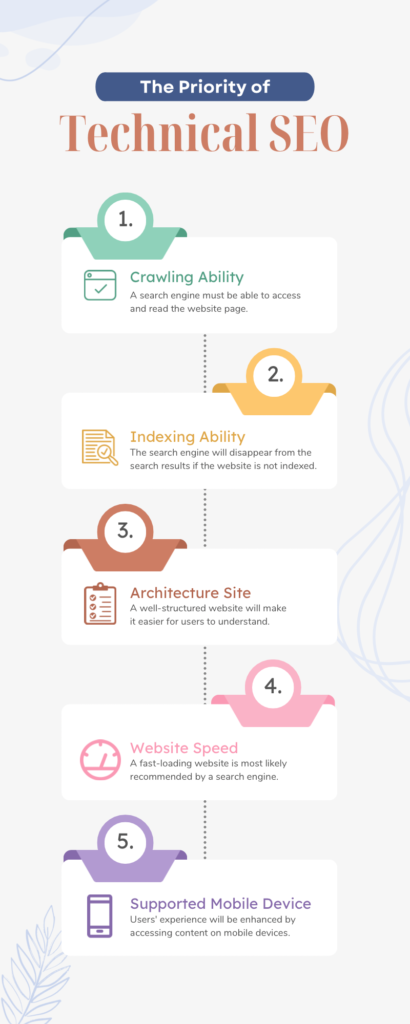
Search Engine Optimization (SEO) plays a crucial role in improving your website’s visibility and driving organic traffic. With the ever-evolving digital landscape, staying ahead requires a solid understanding of effective SEO techniques. In this article, we’ll explore some of the best techniques to boost your website’s SEO.
1. **Keyword Research and Optimization:**
Start by conducting thorough keyword research to identify relevant keywords and phrases in your niche. Use tools like Google Keyword Planner, SEMrush, or Ahrefs to find keywords with high search volume and low competition. Incorporate these keywords naturally into your content, titles, headings, and meta descriptions.
2. **High-Quality Content:**
Content remains king in the world of SEO. Create informative, engaging, and original content that addresses the needs of your target audience. Long-form content tends to perform well, but quality matters more than quantity. Aim to solve problems, answer questions, and provide valuable insights to your readers.
3. **Mobile-Friendly and Responsive Design:**
With the majority of searches happening on mobile devices, having a responsive and mobile-friendly design is essential. Google considers mobile-friendliness as a ranking factor, so ensure that your website is optimized for various screen sizes.
4. **Page Speed Optimization:**
Page speed not only affects user experience but also impacts your SEO rankings. Use tools like Google PageSpeed Insights to identify areas for improvement and optimize your website’s loading times. Compress images, leverage browser caching, and minimize server response times.
5. **Technical SEO:**
Ensure that your website’s technical aspects are in order. This includes creating a clear site structure, optimizing URLs, using descriptive image alt tags, and creating an XML sitemap. Address issues like broken links, duplicate content, and crawl errors promptly.
6. **Backlink Building:**
High-quality backlinks from reputable websites can significantly improve your website’s authority and search engine rankings. Focus on earning natural backlinks through guest posting, influencer outreach, and creating shareable content that others want to link to.
7. **Social Media Integration:**
While social media signals may not directly impact SEO, they can contribute indirectly by increasing your content’s visibility and driving traffic. Share your content across various social platforms to expand your reach and encourage engagement.
8. **User Experience (UX) Optimization:**
Google considers user experience when ranking websites. Ensure that your website is easy to navigate, has clear calls-to-action, and offers a seamless experience across all devices. High bounce rates and low dwell times can negatively affect your SEO efforts.
9. **Local SEO:**
If you have a physical location, optimize for local search by creating a Google My Business profile. Provide accurate business information, gather reviews, and include location-based keywords to increase your visibility in local searches.
10. **Regular Monitoring and Updates:**
SEO is an ongoing process. Regularly monitor your website’s performance using tools like Google Analytics and Search Console. Adapt your strategies based on the data you gather and stay updated with the latest algorithm changes.
In conclusion, boosting your website’s SEO requires a combination of on-page and off-page techniques. By focusing on keyword optimization, high-quality content, technical aspects, and user experience, you can enhance your website’s visibility, drive organic traffic, and improve your search engine rankings. Stay proactive and adapt to the evolving SEO landscape to achieve long-term success.
How to find out you SEO status:
Certainly, there are several tools and resources available that can help you check if your SEO efforts are perfectly executed. Here are some recommendations:
1. **Google Search Console:**
Google Search Console provides valuable insights into your website’s performance in Google search results. It offers information about indexing, search queries, backlinks, and more. You can identify crawl errors, view search analytics, and receive alerts about critical issues affecting your website’s SEO.
2. **Google PageSpeed Insights:**
This tool evaluates your website’s loading speed on both desktop and mobile devices. It provides recommendations to improve your page speed, such as compressing images, optimizing code, and leveraging browser caching.
3. **Google Analytics:**
Google Analytics helps you monitor user behavior on your website, including traffic sources, user demographics, and engagement metrics. It can help you identify which pages are performing well and which might need improvement.
4. **SEMrush and Ahrefs:**
These tools offer comprehensive SEO analysis, including keyword research, backlink analysis, and competitor research. They can help you track your rankings, discover new keyword opportunities, and monitor your website’s overall health.
5. **Moz’s SEO Tools:**
Moz provides a suite of SEO tools that can help you with keyword research, site auditing, backlink analysis, and rank tracking. The MozBar browser extension allows you to analyze websites’ domain authority and page authority while browsing.
6. **Yoast SEO (WordPress Plugin):**
If you’re using WordPress, the Yoast SEO plugin can guide you through on-page SEO optimization. It provides recommendations for keyword usage, readability, meta tags, and more.
7. **Mobile-Friendly Test (Google):**
This tool checks if your website is mobile-friendly and provides suggestions for improvement. With mobile search becoming increasingly important, ensuring your site is mobile-responsive is crucial.
8. **W3C Markup Validation Service:**
This tool checks the validity of your HTML and CSS code. Clean and error-free code is important for proper website rendering and SEO performance.
9. **Website Audit Tools:**
Various online tools offer website audits that analyze technical aspects, on-page SEO, and user experience. Examples include Screaming Frog, Sitebulb, and HubSpot’s Website Grader.
10. **User Testing:**
Conduct user testing to assess the overall user experience on your website. This can help you identify usability issues and areas for improvement.
11. **Social Media Insights:**
Platforms like Facebook Insights, Twitter Analytics, and Instagram Insights provide data on social media engagement, which can indirectly impact SEO.

Remember that achieving “perfect” SEO is an ongoing process, and no tool can guarantee perfection. These resources will help you assess your efforts and make informed decisions for improving your website’s SEO. Regularly monitor your website’s performance, stay updated with industry trends, and be prepared to adapt your strategies to achieve the best results.


